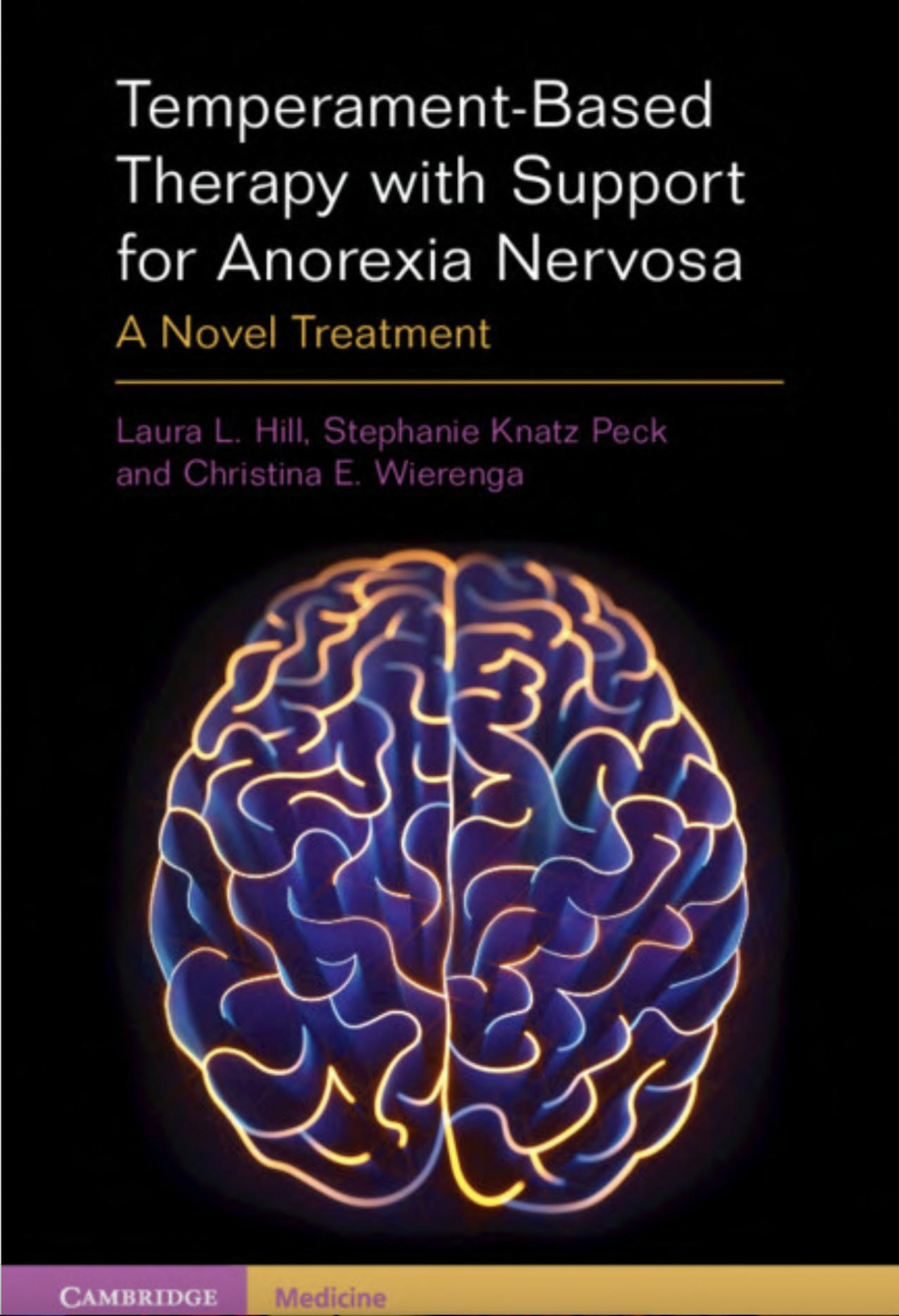
(Laura L. Hill, Stephanie Knatz Peck, and Christina E. Weirenga. Cambridge University Press, 2022. Paperback and Kindle editions available.)
Numerous treatments have been shown to be helpful for people with anorexia nervosa, but more—and more effective—treatments are needed. Existing treatments have generally had good research support, but to date they have not really grown out of our knowledge base about the neuroscience underpinnings of ED symptoms. This new and highly valuable book describes a new approach that is based on this kind of newly evolving knowledge.
Drs. Hill, Peck, and Weirenga lay out a new approach that they have developed and tested. This will be a valuable resource for clinicians.
The Introduction provides an accessible and clear view of the concepts of temperament, personality, and character. Next, the basic neurobiological ideas underlying the treatment are described. The authors note that there is a growing evidence base for temperament based therapy with support (TBT-S), but that results from controlled trials are not yet available. The treatment is presented in two forms: one for “young adults,” aged 17-27, and one for those with severe and enduring AN. This seems a real strength; many treatments are presented in a single form for all cases, but clinicians are well aware of the varying presentations seen in practice.
The treatment itself is described in the chapters that follow. Neurobiological psychoeducation modules are provided. Skills training and dietary approaches are laid out. The manual addresses a variety of “situational” factors, such as multifamily groups, use in different levels of care, incorporation into existing programs, use for those with severe and enduring AN, and so on.
Valuable appendices are also provided. These are a particular strength of the book, and constitute nearly half of the volume.
This valuable addition to the literature is highly readable as well. [As an aside, the authors have dedicated the book to Dr. Walter Kaye.] A particularly nice feature is that key points are summarized in a clearly marked fashion. We have learned a great deal to date about the neurobiological underpinnings of ED, and this wonderful volume provides a method to harness those findings in treatment.
—SC

